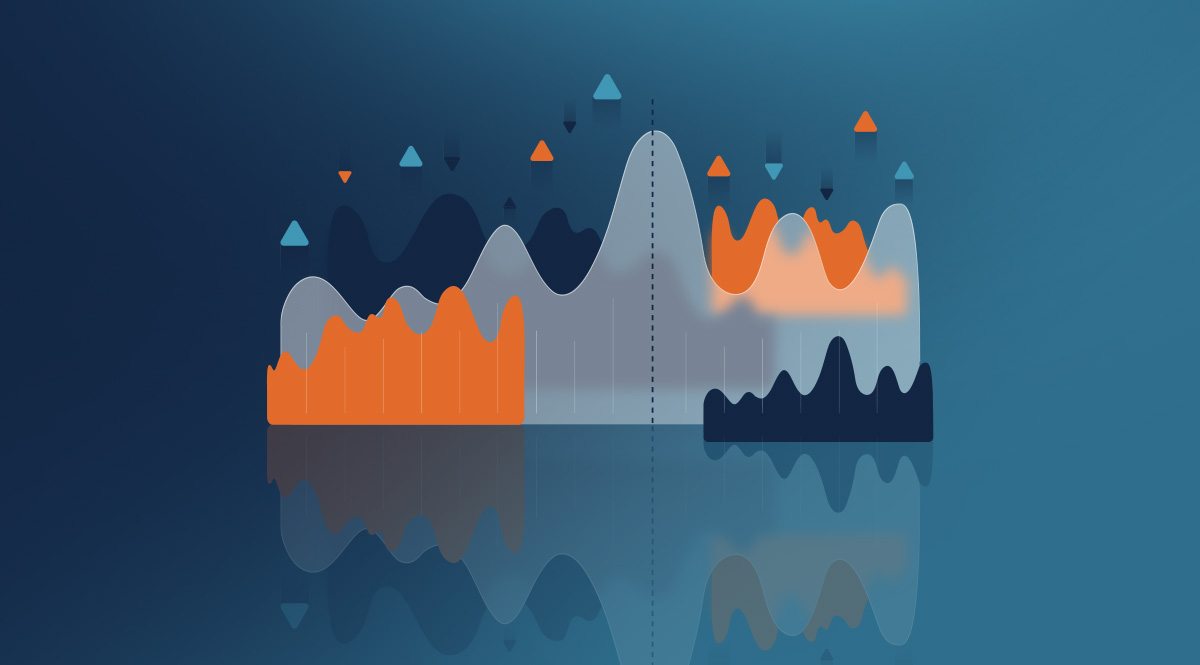3 Ways Data Visualization Improves Business Processes
Pictures aren’t worth 1,000 words in risk management. Their value is actually exponentially more if they serve to help organizational stakeholders spot trends and make revenue-impacting decisions with clarity and speed.
This is why so many risk managers spend countless hours pulling together reports that capture reliable and telling data, as well as depict such data with images that their colleagues, executives or board members — despite their varying roles and backgrounds — can easily understand.
As such, the trend of “data visualization” was born. Data visualization is the process of transforming text-heavy data into pictorial or graphical formats like infographics, dials and gauges, geographic maps, sparklines, heatmaps, and detailed bar, pie and fever charts, and the list goes on.
So, you know what data visualization is. Now, here is why it matters:
Data visualization exposes information in a new light
Information comes to life with graphics, making relevant data difficult to overlook. However, if the same information is hidden in mind-blurring columns, rows, cells and text, valuable insights could be lost.
Data visualization clarifies complex concepts
Because of the way the human brain processes information, it’s simply easier to understand data when presented in a graphical format. This is especially true when multiple data points are involved.
Data visualization speeds up decision making
Because it’s easier to process information from visualizations, it’s also easier to make decisions about the insights they uncover. Stakeholders feel like they have the clarity and confidence necessary to act. Improved data quality and the subsequent understanding of that data makes for overall better decision making–both on your part and the part of any other stakeholders.
Still, even with all the value data visualization brings to the business environment and risk world, a picture cannot stand on its own and make a difference.
Whether you’re using Excel, one-off software or an actual digital dashboard to graphically depict information, data visualizations need to be fed from a single source of connected data from across the enterprise, and they need to be dynamic — meaning, you can drill-down further.
Your ability to make good decisions, fast—as well as support your leaders in their own sound and expedient decision making—can make you the hero of your organization, elevating your career and the role of risk management at your company.
Are Your Data Dashboards Helpful? 3 Questions You Should Ask
Pretty isn’t everything, even when it comes to creating risk-monitoring dashboards using data visualization techniques — the process of transforming text-heavy data into pictorial or graphical formats so it’s easier to consume and understand.
Even the most eye-catching dashboards, charts and graphs equate to “lipstick on a pig” if they reflect incomplete or out-of-date information; if they showcase surface-level or static data; or even if they are difficult to produce. If dashboards don’t reflect accurate or current data, visuals will fall flat at the next board meeting. Business intelligence is the way of the world. Executives want answers, which your dashboards should be able to provide.
Ask these questions to ascertain whether your organization’s current data visualization techniques truly enable business intelligence, or whether they merely elicit vanity metrics:
Is your data connected?
From Excel spreadsheets and other on-premises software, to data warehouses and cloud-based applications, you likely have dozens of different data sources. Is all your internal and external data normalized and aggregated into a single source of truth? Further, can your data sets interact or “talk” to each other — automatically highlighting relationships to allow for more comprehensive and contextual analysis, and additional queries for information in real time.
Do you have easy access to advanced analytical tools?
The bounty of data at your fingertips can be equal parts blessing and curse. Are your visual data points dynamic — meaning, can you drill-down further by any data subset your heart desires on the fly (from claim types, property types and locations to coverage lines, regions and timeframes, etc.)? Can you integrate all the information you have, analyze it against the “bigger picture,” and use the results to make realistic predictions to guide your daily decisions?
Is your data analytics DIY?
Are you able to filter, segment and analyze data without in-depth technical knowledge? The best data visualization tools will allow you to efficiently and independently query the information you’re seeking. Further, do you receive customized alerts, outlining what’s happening in your business and when, so you can make timely and informed decisions without having to constantly monitor every indicator for change?
If you didn’t answer “yes” to the above questions — and your dashboards seemingly don’t stack up when it comes to providing business intelligence — don’t despair. The right web-based risk management solution supports integrative data visualization and enable insights that have previously been unobtainable.
5 Methods to Identify Risks
Risk identification at organizations usually transpires through one of the following five methods:
Comparative Analysis
How different data compares under similar or dissimilar circumstances
Relationship Analysis
How different data relates to and affects each other
Composition Analysis
How different pieces of data contribute to a broader understanding of a business problem
Distribution Analysis
How different data is distributed across geographies or other categories
Trend Analysis
How different data moves up or down, or stagnates
But identifying risks — even with frameworks for the above methodologies — can be difficult when risk data is buried in countless spreadsheets and line after line of innumerable data cells. That’s why data visualization or visual analytics — the process of transforming text-heavy data into pictorial or graphical formats — can help, particularly when it’s embedded in risk management technology.
Data Visualization and Risk Management
Integrated risk management technology exists so organizations can consolidate risk and insurance data from across the enterprise; surface relevant information from wherever it’s hiding; connect it with other internal and external data; and then normalize the data so it’s all relatable.
With the right functionality, risk management technology can exploit its deep connection to expansive and critical risk and insurance data to automatically create visuals that take into account the full spectrum of risk. Whereas manual analysis (hunting and pecking through spreadsheets) or even standard dashboards might only allow you to explore one risk identification method at a time, the best data visualization is dynamic — allowing users to explore all risk identification methods at one time.
Users can instantly manipulate images and drill deeper with more specific queries for any type of information. This is especially helpful when different stakeholders want to see different types of information because of disparities in their roles and need for different types of data to execute on their prescribed responsibilities.
Insurance claim and policy data are just two examples of information that can be visualized and analyzed from 360 degrees within risk management technology. Related data can be configured and reconfigured visually time and time again based on what the stakeholder interested in the information wants to see, or the business problems specific stakeholders are trying to resolve.
For instance, a risk manager might want to see claim severity data from trending, timeline and geographic perspectives to get a handle on incidents; what’s causing them; and how they can be prevented at certain locations. A claims manager, on the other hand, might want to see claim severity data through the lens of how long the most severe claims are open versus less severe claims in order to evolve processes and shorten the claims lifecycle for severe claims.
When it comes to insurance policy data, stakeholders might start out looking at the policies they have in place but then drill down to analyze premium spend versus policy coverage; the types of policies or locations demanding the highest premiums; or the carriers to which premium spend is going and whether that spend is distributed appropriately to minimize risk.
Regardless of the business problems that need to be solved or the stakeholders attempting to solve the problems, with just a few clicks, any user can alter their queries and analyze new visualizations to capture a holistic view of risk, or the more specific components of risk of which they are in charge.
The ability to illustrate risk across an entire organization from a single source of truth — regardless of department, line of business or even the actual risks themselves — not only drives business intelligence, but also drives integrated risk management. As such, effective and sophisticated data visualization is an increasingly critical capability within web-based integrated risk management technology.
Learn more about how to derive useful action from insights with data visualization.




